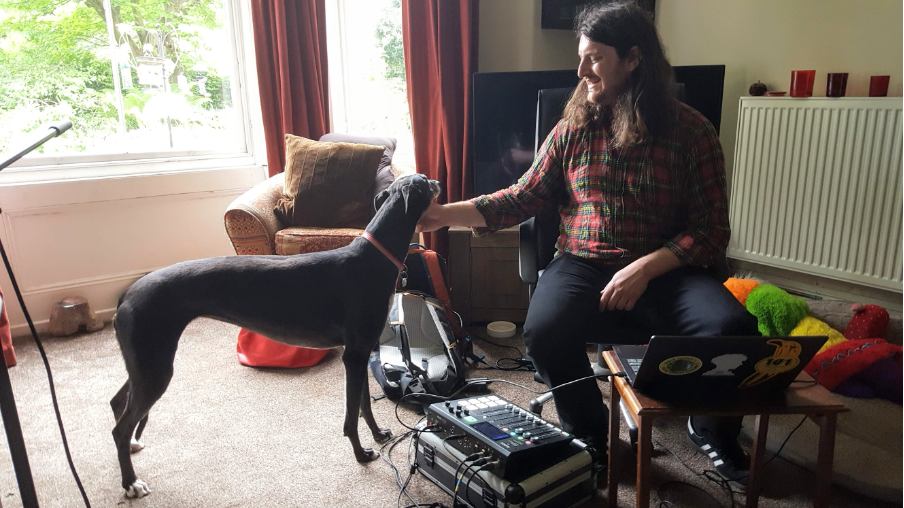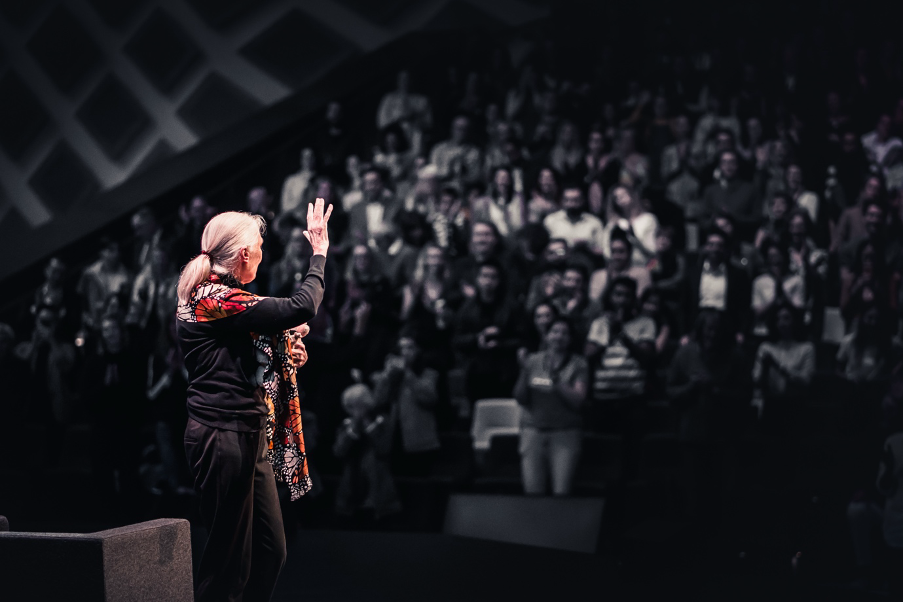Remembering Jane Goodall
The world has lost Dr Jane Goodall. At 91, she was still travelling, still speaking, still urging us to preserve the environment and protect the chimpanzees who first brought her to the world’s attention. Her death is a loss not only to those who knew her but to the world as a whole.
We were both fortunate to know Jane in different ways, and she changed each of us.
Peter Singer
I first encountered Jane’s work through In the Shadow of Man, which I read soon after it came out in 1971. It broke new ground, showing chimpanzees as individuals with personalities, capable of thought, problem-solving, and planning. At the time, I had just become a vegetarian and was beginning to think about the ethics of how we treat animals. Jane’s work was thrilling, and it influenced me deeply. I refer to it in Animal Liberation, using it to rebut the argument that because animals cannot use language to tell us what they are feeling, we can’t really know what they are feeling. She showed, through her close observation of chimpanzees, that the basic signals we use to express such feelings as pain, fear, love, anger, joy and surprise are not specific to our own species, so we have little difficulty in recognizing these emotions in some species.
I subsequently met Jane at an event for animals, and was very pleased when she told me that Animal Liberation had helped persuade her to become vegetarian. When Animal Liberation Now, the 2023 updated edition was approaching publication, she was kind enough to endorse the book, writing: “I became a vegetarian when I read Animal Liberation back in the 1970s. Then and there I stopped eating meat. If I’d read this revised Animal Liberation Now, I’d have become a vegan much sooner.”
The last time I met Jane was in May 2024, at her home in Bournemouth, a large Victorian brick building with an overgrown garden, where she lived with her sister, her niece, and a rescued greyhound. I visited her there with Kasia, with whom I co-host the podcast Lives Well Lived. Usually we do our interviews online, but Jane had requested an in-person interview. She had just turned 90, yet she told us that we needed to fit the interview in before she departed for another world tour, this time to visit all 25 Jane Goodall Institutes around the globe during that year. That determination - to encourage her supporters working to mitigate climate change, and to protect wilderness and all the animals living in it - summed up who she was.
Suzi Jamil
From the beginning of my career, my mission has been to bring intellectual giants to the stage, people whose ideas could shape society and remind us that making change and leaving impact are not optional, but necessary. Among all the extraordinary thinkers I worked with, Jane Goodall stood apart. She was the perfect embodiment of that mission: uncompromising, authentic, and able to move audiences not just with knowledge, but with the weight of her presence.
When I brought her to Australia and New Zealand in 2017 and 2019, I watched entire theatres rise to their feet in tears, not out of sadness, but because they had glimpsed, through Jane, a different way of seeing our place in the world. Her words carried the weight of decades in the field, yet what struck me most was how unpretentious she was. For someone so widely admired, she never carried herself with the burden of fame. She was content with simplicity: whiskey sipped straight from a mug, a quiet refusal to drink from plastic, a soft spot for dark chocolate with raspberry and blueberry. She teased me about my heels, urging me to kick them off and just be myself. Jane was, in every way, exactly what you imagined her to be: genuine, grounded, and fiercely strong.
Her tours were acts of generosity, never performance. She insisted that proceeds go to the Jane Goodall Institute rather than to herself, because the mission always came first. She toured relentlessly, year after year, and when she told me we would see each other again in three years, I believed it. Then the pandemic arrived, and that moment never came. It feels poignant now that she left this world while still doing what she loved most, standing before audiences, reminding us of our duty to the planet and to one another.
One of the most powerful moments on tour came when we played the video of Wounda, a chimpanzee who had been rehabilitated and was finally released back into the wild. Just before running into the forest, Wounda turned and wrapped Jane in a long, emotional embrace. Even now, I still cry watching that video. So did our audiences -- city after city, people were moved to silence and tears. It captured everything about Jane’s life’s work: not just science or advocacy, but love, and the belief that compassion can reach across species.
Touring Jane was one of the greatest privileges of my life. She changed my trajectory by showing me, with her life as much as her words, what it means to be a woman who leaves a mark, who pushes for change, and who does not compromise on what matters most.
Together
Jane Goodall showed us how to look at animals differently, how to live with courage, and how to dedicate a life to something larger than oneself. Her legacy is in the forests she fought to protect, the animals whose lives she changed, and in all of us who were touched by her example.
Perhaps no single image captures that legacy better than the moment with Wounda, the chimp who turned back from freedom to embrace Jane. It symbolises the compassion, trust, and love that defined her work, and it will continue to inspire generations.
It feels right to honour her together, because although we knew her in different ways, her life led us both to the same conviction: that change is possible, and necessary.
If you have a memory of Jane, please share it with us. Her legacy lives on in every life she touched, human and nonhuman alike.
Thank you, Jane.







🐵 Jane Goodall observes the orange alpha and his human followers mistaking noise for power.
“The dominant male of this peculiar troop is easily spotted: bulbous in form, with an unusual orange coloration, a synthetic pelt perched on his head, and an expression of perpetual grievance. Taxonomists classify him as Homo Narcissus Vulgaris—an insecure subspecies defined by noise displays, conspicuous consumption, and the conviction that every reflective surface holds either an enemy or an admirer.
This specimen thrives not by hunting or building but by perpetual performance. His dominance displays are daily and unceasing: roaring at rallies, thrashing the air as if chasing off invisible rivals, declaring his magnificence in tones that blend grandeur with desperation.” Read more ↓
https://patricemersault.substack.com/p/the-noisiest-male-in-the-forest?r=4d7sow
Beautiful tribute to such an extraordinary woman💚